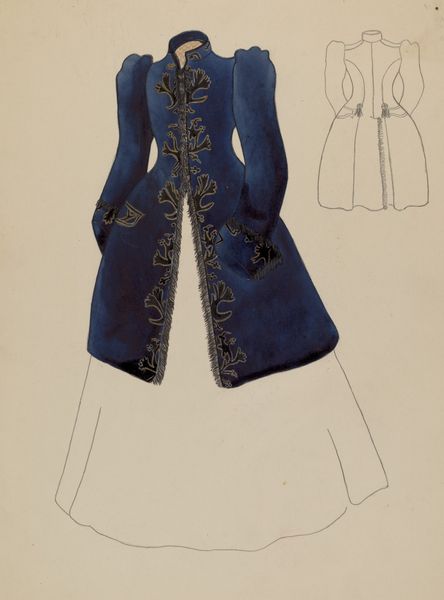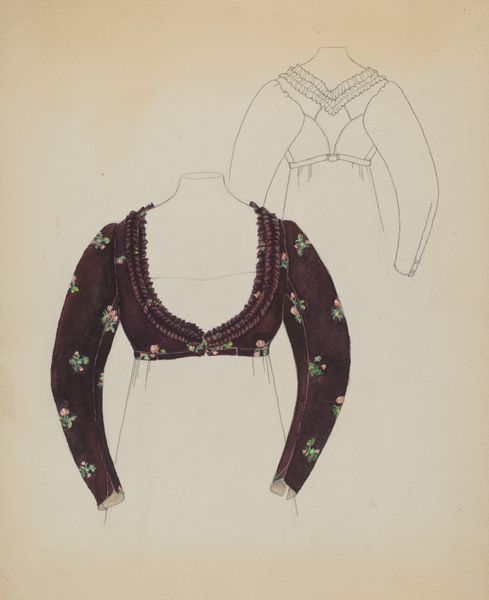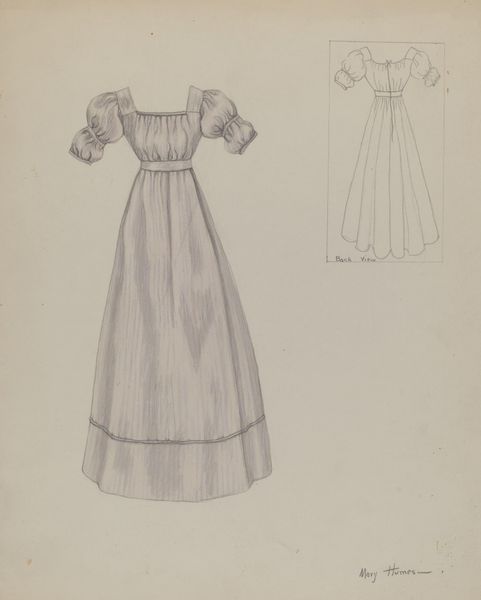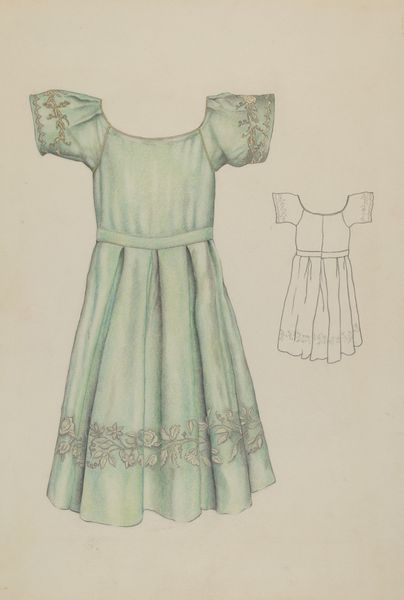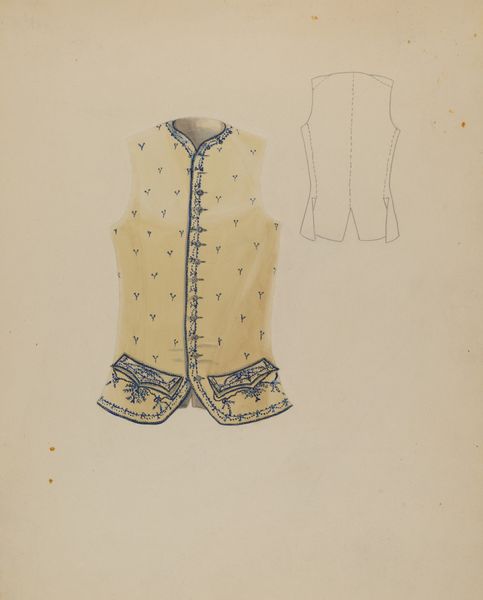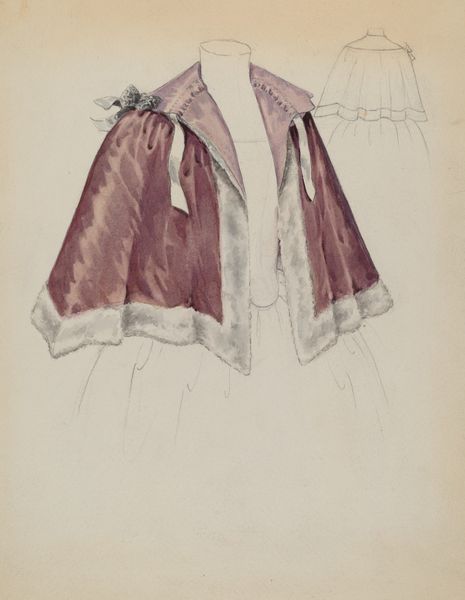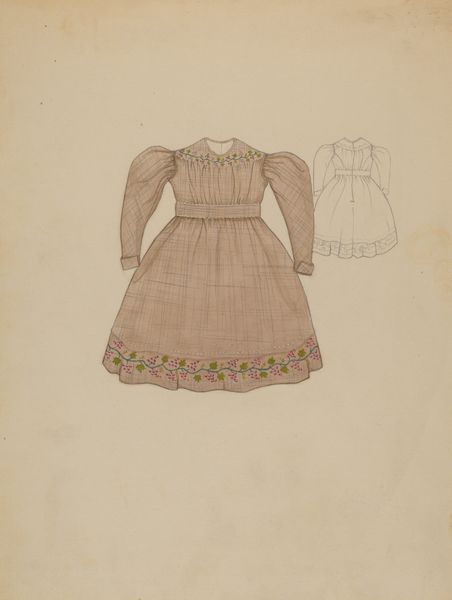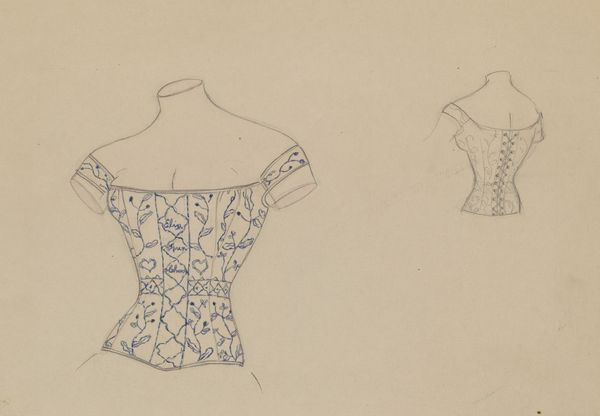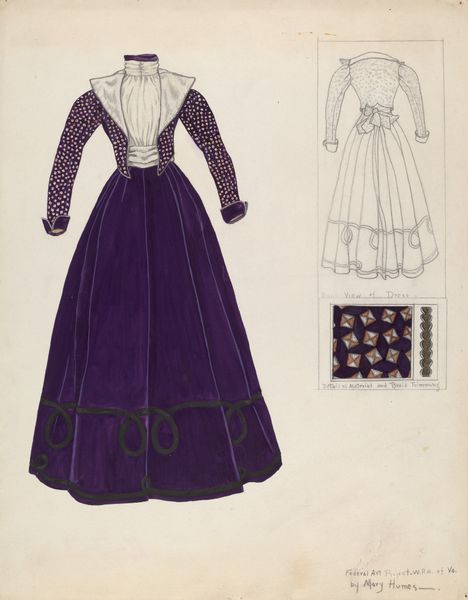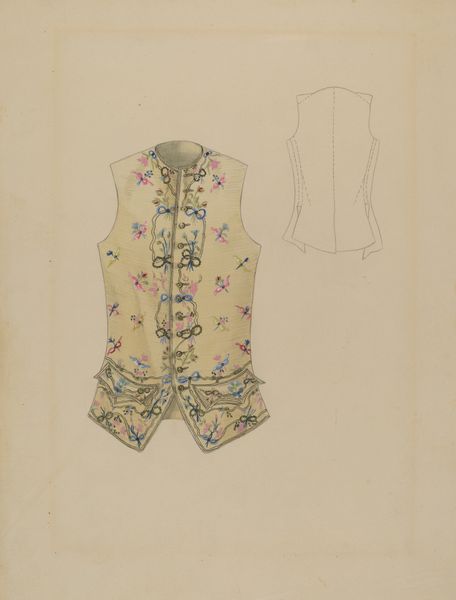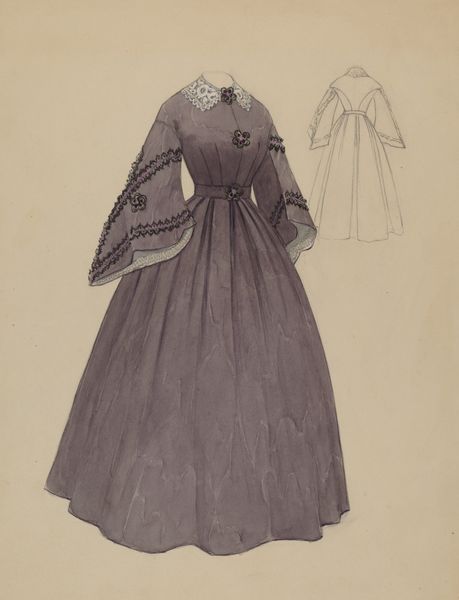
drawing
#
fashion design
#
drawing
#
underwear fashion design
#
fashion mockup
#
fashion and textile design
#
fashion based
#
historical fashion
#
wearable design
#
geometric
#
line
#
clothing photo
#
fashion sketch
#
clothing design
Dimensions: overall: 30.5 x 23 cm (12 x 9 1/16 in.)
Copyright: National Gallery of Art: CC0 1.0
Curator: Immediately, I'm struck by its potential, a sketch pregnant with the possibilities of mid-1930s haute couture, yet somehow, the stark white dress contrasts with the ornateness of the cape. It almost feels like two halves of different realities stitched together. Editor: Indeed. What we have here is a design drawing from around 1936, created by Charles Criswell. It showcases a cape design, likely intended for garment production. The drawing medium provides us an interesting glimpse into the creative process of the designer. Curator: Absolutely. The cape, predominantly in shades of purple and plum, showcases floral motifs and lace details that seem meticulously crafted. It's evocative of a certain romanticism, even perhaps a subtle nod to the bygone Edwardian era, but streamlined, of course. There’s something symbolic, I think, in that color choice: the purple is an almost imperial color paired with very common design themes like the flower. Editor: I see what you mean about the clash, especially from a socio-historical perspective. By the mid-30s, Europe was witnessing increasingly grim socio-political movements, and perhaps the austere gown mirrors the anxiety that would be offset by the elaborate ornamentation of a cape—as an assertion of artistry over looming despair. It is interesting to wonder about the social forces behind something created as “art”. Curator: Exactly, the symbolism could not be unintentional. The tassel detailing hints at a level of craft rarely seen today. Though, the contrast could speak to class divisions as well. The elite cloaked, shielded, or draped, while the 'everyday dress' remains in monochrome, utilitarian. Editor: This piece offers a glimpse not only into the aesthetic values of the era, but also provides insight into design practice and the anxieties of the time. We see this even in museums. What sort of stories we want to see and tell in the arts. Curator: I think it invites us to consider how the creation of an aesthetically pleasing item of clothing in that precise socio-political climate represents cultural memory, while maybe holding complex messages from the past, frozen into a drawing medium. The study is not just fashion, it holds value from outside those frames as well.
Comments
No comments
Be the first to comment and join the conversation on the ultimate creative platform.
